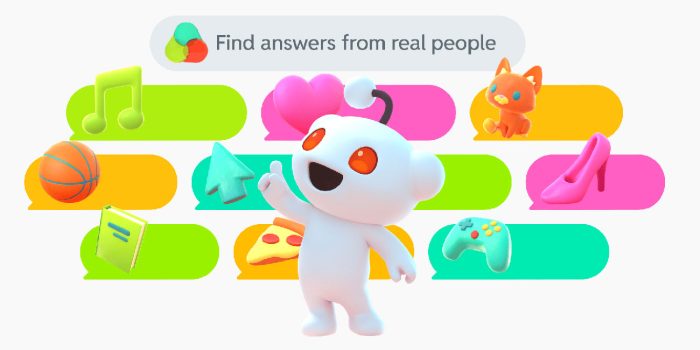If you’ve ever used Reddit to dig for answers or insights, you know how much…

The Dangers of Doomscrolling for Designers and How to Break Free

4 days ago
As a creative professional, navigating the digital realm is second nature to you. It’s normal to follow an endless thread of ideas across the web. But lately, you may have found yourself lost in seemingly endless scrolls that go nowhere. If so, you’re not alone.

Doomscrolling refers to continuously scrolling through negative or distressing news online, often leading to increased feelings of unease or hopelessness.
For web designers and developers, doomscrolling refers to the habit of endlessly browsing through negative critiques, overwhelming design trends, or daunting tech updates online, often resulting in feelings of inadequacy or stress about our work and skills.
Doomscrolling affects many in our community. Especially when the lines between work, inspiration, and mindless browsing blur. In this post, we’ll explore the unique risks you face and how you can steer clear.
The Unique Dangers of Doomscrolling for Web Professionals
You pride yourself on staying updated. The newest design trends, the latest tech breakthroughs — you’re on top of it all. But what happens when the need to remain informed becomes an endless scrolling loop?
Web designers face some unique challenges when it comes to doomscrolling:
1. Being Overwhelmed by Rapid Change: The tech world moves fast. Too fast, sometimes. Constant exposure to evolving trends can make you feel as though you’re perpetually lagging. This sensation can spark anxiety, pushing you to scroll even more in an attempt to ‘catch up,’ creating a vicious cycle.
2. Comparison Overdrive: You see other designers’ portfolios, or the innovative apps Web3 geeks are developing, and the self-doubt begins. Doomscrolling amplifies the comparison game, making you feel behind the curve, even when you’re at the top of your game.
3. Burnout from Screen Overload: It’s no secret that web designers spend a lot of time in front of screens. But when work hours blend into doomscrolling sessions, the line between professional and personal screen time blurs, escalating the risk of burnout.
4. Eroding Creative Spark: Creativity thrives on a diverse diet of experiences and inputs. Doomscrolling narrows your digital field of vision, exposing you repeatedly to the same types of content. Over time, this can stifle the creativity that fuels your passion.
5. Physical Strain: Beyond the mental and emotional toll, the physical implications can’t be ignored. Extended design sessions combined with doomscrolling can lead to aggravated digital eye strain, wrist pain, and poor posture.
Recognizing these dangers is the first step. The good news? You possess the tools and skills to combat them.
How Doomscrolling Destroys Design Careers
What starts as a quick check can morph into hours of nonstop scrolling. And doomscrolling costs you far more than just lost time; it can seriously affect your professional life:
Stagnation in Creativity and Innovation
You pride yourself on being creative. But with constant exposure to an overwhelming stream of content, you risk becoming a mere spectator.
Your brain becomes a repository of what you’ve seen rather than what you can create. Instead of setting the pace and being a trendsetter, you might find yourself unconsciously mimicking the designs and ideas of others. Remember, true innovation often requires a fresh perspective, not an inundated mind.
Impact on Client Relationships and Communication
You value your clients. They’re the reason you’re in this game. But doomscrolling can eat into the time and energy you dedicate to them. Every minute you spend scrolling is less spent refining designs, debugging a site, or simply communicating.
Clients notice when your responses are delayed or when the energy in your work diminishes. They’re looking for your unique touch, and it’s hard to give that when you’re mentally exhausted from information overload.
In essence, the tech and design world is fast-paced, and staying updated is crucial. But there’s a fine line between being informed and getting lost in the digital maze. You need to recognize the difference for the sake of your creativity, your clients, and your overall professional growth.
How to Break Free From Doomscrolling
The digital world is your playground. But like any playground, boundaries are essential for safety and enjoyment. As a web designer, the unique challenges of doomscrolling can feel overwhelming. However, you’re perfectly equipped with the skills to pivot out of this spiral:
1. Leverage Tech Solutions: Turn the tables on technology. Use browser extensions or apps that prompt you to take breaks, limit screen time, or even block distracting sites during work hours.
Some of the most popular tech solutions are StayFocusd, Freedom, Forest, and LeechBlock, but there are many more out there.
2. Curate Your Digital Environment: Not all content is created equal. Choose sources that uplift and inform rather than those that trigger anxiety or endless scrolling. Prioritize quality over quantity.
3. Designate ‘Inspiration Hours’: Allocate specific windows for seeking design inspiration or exploring tech trends. Outside these hours, focus on executing ideas rather than consuming new ones.
4. Physical Workspace Matters: Create a workspace that encourages productivity. This might mean investing in ergonomic furniture, setting up tech-free zones, or having a designated spot for sketching and offline brainstorming.
5. Offline Creative Boosts: Dive into non-digital creative exercises. Sketching, building physical prototypes, or even tech-free walks can offer fresh perspectives and reduce the lure of doomscrolling.
6. Social Accountability: Share your goal to reduce doomscrolling with peers or online communities. Having someone to check in with can motivate you to stay on track.
7. Mindful Consumption: Before diving into content, ask yourself: “What’s my intention?” Whether seeking inspiration, learning, or relaxing, being clear about your purpose can prevent mindless scrolling.
8. Set Screen Curfews: Dedicate the hour before bedtime to be screen-free. This not only helps in reducing doomscrolling but also contributes to better sleep.
9. Stay Physically Active: Introduce short physical breaks throughout your day. Stretch, take a brief walk, or practice deep breathing. Physical activity can reset your mind and reduce the urge to scroll endlessly.
10. Celebrate Small Wins: Every time you successfully resist the doomscrolling temptation, give yourself credit. Recognize your progress and celebrate the incremental changes towards a healthier digital lifestyle.
Remember, it’s not about cutting ties with the digital world but fostering a healthier relationship with it. With these tips in hand, you’re well on your way to navigating the digital realm with intention and balance.
Conclusion
Navigating the vast digital landscape is both enjoyable and a challenge, especially for those involved in web design and development.
While the lure of doomscrolling is real and potent, remember that you have the power to define your digital experience. By understanding the risks, setting boundaries, and adopting mindful practices, you can transform your online journey from one of endless scrolling to one of purpose and fulfillment in which every minute you spend online is worthwhile.
Louise North
Louise is a staff writer for WebdesignerDepot. She lives in Colorado, is a mom to two dogs, and when she’s not writing she likes hiking and volunteering.
#Dangers #Doomscrolling #Designers #Break #Free


